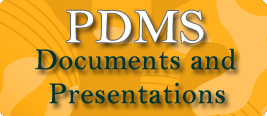- the methodology and survey tool used for the conduct of household surveys based on core poverty indicators
- processing the data gathered through a software; and
- use of data for pro-poor targeting, planning, monitoring and impact assessment.
- households
- sub-villages or puroks
- villages
- municipalities
- cities
Health Sector
- water source
- Sanitation
- malnutrition
- child mortality
- maternal mortality
- disability
- school dropouts
- illiteracy
- income
- meal; and
- food thresholds
- unemployment
- housing (whether makeshift, temporary or permanent)
- land tenure status
- crime incidence
PDMS can help identify projects based on specific problems affecting individual households or local communities. Through PDMS, households and local communities with relatively high levels of deprivation can be targeted with relevant assistance.
PDMS tracks specific services actually delivered to target households and communities.
PDMS can also establish the impact of interventions on the situation of individual households and communities over three to five years or longer.
Historical Background of PDMS
PDMS was field-tested and developed in 2004 initially in 17 municipalities in Bohol as part of efforts to address high poverty incidence in the province.
The Bohol Local Development Foundation, Inc. (BLDF) and the Provincial Planning and Development Office (PPDO) collaborated to produce several versions of the questionnaire and software for PDMS, known during the early days as Local Poverty Reduction Action Plan (LPRAP) database tools.
Initial enhancements of the survey methodology and the software were made possible in 2006 by funding assistance from the British Embassy Manila.
Holy Name University, through its Center for Research and Governance, provided technical inputs to modify the methodology and the survey tools prior to large-scale replication.
The questionnaire was one of several survey tools recommended by a national inter-agency committee which included the National Economic and Development Authority (NEDA), the Department of the Interior and Local Government (DILG), the National Anti-Poverty Commission (NAPC), the Department of Social Welfare and Development (DSWD).
The questionnaire and the survey methodology were field-tested and revised based on findings from researchers and the feedbacks provided by respondents and BLDF fieldworkers.
Agencies Using PDMS
PDMS has been used in a number of ways by LGUs, national and provincial government Agencies, donors (AusAID, World Bank, World Vision, EU, CIDA, etc.)
Examples:
-to identify project beneficiaries
-to prepare project proposals
-to formulate plans and programs, etc.
PDMS Features
PDMS software Version 2.3 includes the following features:
- flexibility to incorporate different indicators
- capability to compare data across years
- Integration with available spatial data
- ability to store secondary data for use in local planning
- user-friendly data management at various levels
- built-in data entry validation
System Security
Password protection
- PDMS uses username and password protection assigned at different levels of access
- Read – users can generate reports up to location levels only
- Household Read – users can generate reports up to household levels, able to access household data
- Household Write – users can access and modify household data
- Root – users can access and modify household data and manage user permissions
Technologies Being Used
Using free open source components
- Apache HTTP server – notable for the initial growth of the worldwide web and is first to surpass the 100 million hosted websites milestone
- MySQL Database – a relational database management system that runs as a server
- PHP – scripting language designed for web development to produce dynamic web pages
- MapServer – developed by the University of Minnesota for building spatially enabled internet applications
Web-based application - single server installation accessed by users using a web browser
- Accessible using any web browser on any platform
- Web browser based on the Gecko Layout Engine is most recommended
Firefox, Netscape, SeaMonkey, Flock, Chrome, etc.
- Can be hosted on any system (Windows, Linux, Unix, BSD, etc.) as long as it runs the servers required (Apache, PHP, MySQL, MapServer)










